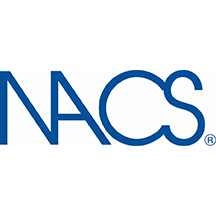 Convenience store owners regularly update stores to meet the demands of modern customers.
Convenience store owners regularly update stores to meet the demands of modern customers.
To keep pace with the needs of today’s consumers and the competition, convenience store owners are regularly revamping locations to add foodservice and other amenities.
The U.S. convenience store industry cumulatively invested more than $6 billion in upgrading stores in communities across the country in 2015, according to industry metrics announced today by the National Association of Convenience Stores (NACS).
The average cost of a store remodel in 2015 was $409,582, up 40% from an average cost of a remodel in 2011. With 12% of all convenience stores undergoing remodels in 2015, that means that the industry cumulatively committed more than $6.3 billion to improving stores in neighborhoods across the country.
The industry also invested billions of dollars more in new store builds. The cost to build a new convenience store in a rural neighborhood was $4.36 million in 2015. The cost to open a convenience store in an urban market was roughly $500,000 more per store than rural locations, averaging $4.87 million, mostly because of higher real estate costs, even though the lots and stores typically are smaller. Rural lots average 80,052 square feet compared to 71,525 for urban stores. And rural stores average 4,938 square feet, compared to 4,594 square feet.
The cost of the building itself was 37% of the cost of a new store build. Equipment costs (for foodservice, motor fuel and technology, in particular) were also 37% of overall costs. The remainder of the costs were for land (22%) and inventory (4%).
The average interval between store remodels is 10 years. The average age of registered vehicles in the United States is 11.5 years, so more than likely that the typical car pulling into a convenience store—for food of fuel—is older than the store itself.
Store operators also are twice as likely to own the stores than lease them; 68% of new stores built in 2015 were owned, and the remainder were leased.
Because of this constant reinvestment by the convenience store industry, there are very few old or historical convenience stores, although there are exceptions. Reighard’s (Altoona, Pa.) proclaims to be the oldest existing gas station—dating to 1909—and a former Big Top (Denver) that first opened in 1965 may be the oldest convenience store that has continually sold gas.
“Instead, today’s convenience stores are often very contemporary, and owners regularly upgrade stores to add modern conveniences, especially as stores continue to invest in new services and foodservice programs,” said NACS Vice President of Strategic Industry Initiatives Jeff Lenard. “Convenience stores don’t just serve communities—they invest in them. With this large investment, they have a stake in the community’s success and seek to enhance it.”
The new metrics were announced during the NACS Show, the premier event of the year for the convenience and fuel retailing industry.
